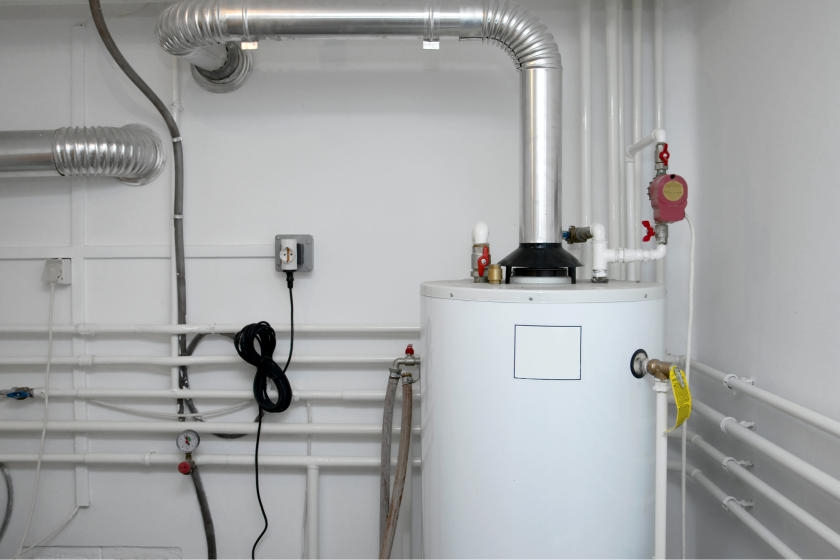Caring for Your Home's Hot Water System: Important TipsEasy Steps to Maintaining Your Home's Hot Water System
Caring for Your Home's Hot Water System: Important TipsEasy Steps to Maintaining Your Home's Hot Water System
Blog Article
They are making a few great annotation on the subject of How to Maintain a Hot Water Heater in a Few Simple Steps overall in this great article in the next paragraphs.

Hot water is crucial for daily convenience, whether it's for a refreshing shower or washing recipes. To ensure your warm water system runs efficiently and lasts much longer, regular maintenance is vital. This write-up provides functional tips and understandings on how to preserve your home's hot water system to avoid disturbances and costly repair work.
Introduction
Preserving your home's hot water system may seem complicated, but with a few basic actions, you can ensure it runs efficiently for years to find. This overview covers every little thing from understanding your hot water system to do it yourself maintenance ideas and understanding when to hire expert aid.
Importance of Maintaining Your Hot Water System
Routine upkeep not only extends the life expectancy of your warm water system yet also ensures it operates efficiently. Ignoring upkeep can bring about lowered performance, greater power costs, and also premature failure of the system.
Signs Your Hot Water System Requirements Upkeep
Recognizing when your warm water system needs focus can prevent major issues. Look out for signs such as inconsistent water temperature, weird noises from the heater, or rusty water.
Flushing the Water Heater
Flushing your water heater eliminates debris accumulation, enhancing effectiveness and extending its life.
Checking and Changing Anode Rods
Anode poles protect against deterioration inside the tank. Inspecting and replacing them when worn out is vital.
Complicated Problems Needing Expert Help
Examples consist of significant leakages, electric troubles, or if your hot water heater is continually underperforming.
Regular Expert Maintenance Benefits
Specialist upkeep can consist of extensive assessments, tune-ups, and guaranteeing conformity with security requirements.
Checking and Adjusting Temperature Setups
Readjusting the temperature setups makes sure optimum efficiency and security.
Do It Yourself Tips for Upkeep
You can execute a number of upkeep jobs yourself to keep your warm water system in leading problem.
Looking for Leakages
On a regular basis check pipes and connections for leakages, as these can result in water damage and greater costs.
Comprehending Your Hot Water System
Prior to diving into maintenance tasks, it's useful to understand the basic components of your hot water system. Typically, this consists of the hot water heater itself, pipelines, anode rods, and temperature controls.
Month-to-month Maintenance Tasks
Regular month-to-month checks can aid capture minor concerns prior to they escalate.
Checking Pressure Alleviation Valves
Testing the stress relief valve ensures it operates correctly and avoids excessive stress buildup.
Protecting Pipes
Shielding hot water pipelines decreases warmth loss and can save power.
When to Call an Expert
While DIY upkeep is advantageous, some concerns require specialist competence.
Verdict
Normal maintenance of your home's hot water system is crucial for effectiveness, long life, and cost financial savings. By following these ideas and knowing when to look for professional assistance, you can ensure a reputable supply of warm water without unforeseen disturbances.
How to Maintain an Instant Hot Water Heater
Before tinkering with your hot water heater, make sure that it’s not powered on. You also have to turn off the main circuit breaker and shut off the main gas line to prevent accidents. Also turn off the water valves connected to your unit to prevent water from flowing into and out of the appliance. 2. When you’re done, you have to detach the purge valves’ caps. These look like the letter “T” and are situated on either side of the water valves. Doing so will release any pressure that has accumulated inside the valves while at the same time avoid hot water from shooting out and burning your skin. 3. When the purge valves’ caps are removed, you have to connect your hosing lines to the valves. Your unit should have come with three hoses but if it didn’t, you can purchase these things from any hardware or home repair shops. You can also get them from retail stores that sell water heating systems. Read the user’s manual and follow it to complete this task properly. When the hosing lines are connected, open the purge port’s valves. 4. You should never use harsh chemical cleaners or solutions when cleaning your unit. Make use of white vinegar instead. It should be undiluted and you’ll probably use about 2 gallons. 5. Now flush your water heater. This task should probably take about 40 minutes. We can’t give you specific directions for this because the procedure is carried out depending on the type, model and brand of your heater. With that being said, refer to the user’s manual. 6. When you’re done draining the unit, you have to turn off the purge port valves again. Remove the hosing lines that you earlier installed on each of the water valves. Put the valve caps (purge port) back in their respective places and be very careful so as not to damage the rubber discs that are found inside these caps. 7. Now that everything’s back in place, check your user’s manual again to find out how to reactivate your water heating system. 8. Once it is working, turn one of your hot water faucets on just to let air pass through the heater’s water supply pipes. Leave the tap on until water flows smoothly out of it. https://www.orrplumbing.com/blog/2014/september/how-to-maintain-an-instant-hot-water-heater/

I am very excited about How to Maintain Your Water Heater & Prolong its Life and I really hope you liked the new piece. Do you know another person who is fascinated about What Kind of Maintenance Do Water Heaters Need?? Do not hesitate to share it. Thanks for taking the time to read it.
Schedule Service Report this page